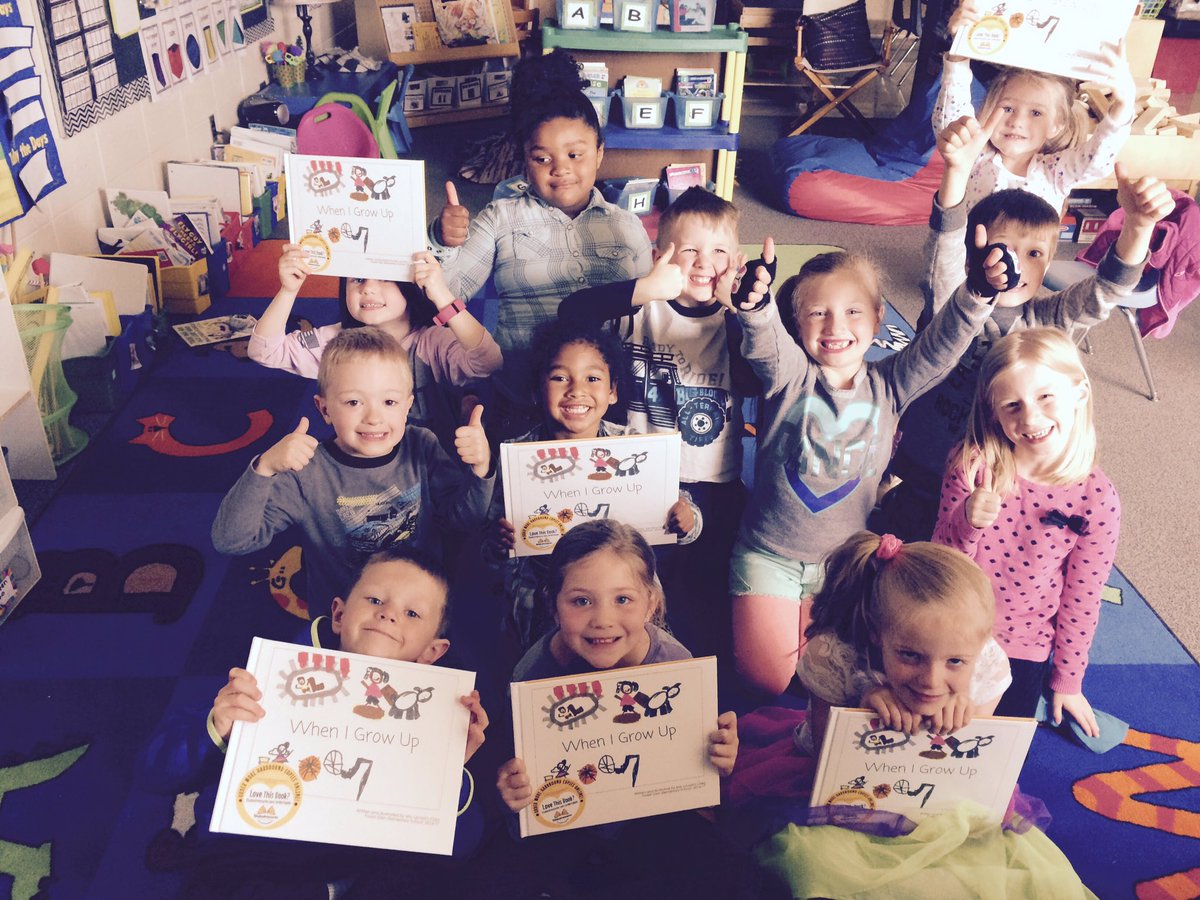 My students never cease to amaze me with their creativity. As adults, we tend to filter and restrict ourselves, worrying that we’ll appear too silly, too ridiculous, or too “out there.” Most kids, on the other hand, don’t have those filters yet. Because of their fearlessness, they end up conjuring up some truly fantastic creations.
My students never cease to amaze me with their creativity. As adults, we tend to filter and restrict ourselves, worrying that we’ll appear too silly, too ridiculous, or too “out there.” Most kids, on the other hand, don’t have those filters yet. Because of their fearlessness, they end up conjuring up some truly fantastic creations.
I’m proud of my kids and their courage, and I want to give them every opportunity to share their creativity and show off all those fantastic ideas. At the same time, my budget is limited—as most teachers’ budgets unfortunately are. Luckily, publishing student work doesn’t have to be expensive. In fact, these three ideas won’t cost you a dime.
 Idea #1: Blog About It
Idea #1: Blog About It
 These days, getting published on the internet is as easy as a few clicks of a mouse, even for kids. While this is certainly exciting, the obvious downside is that there’s a lot of content and commentary we wouldn’t want our young and impressionable students to be exposed to just yet. Student blogging offers you the best of both worlds by allowing your students to be published online, but in a safe, secure space that’s under your supervision.
These days, getting published on the internet is as easy as a few clicks of a mouse, even for kids. While this is certainly exciting, the obvious downside is that there’s a lot of content and commentary we wouldn’t want our young and impressionable students to be exposed to just yet. Student blogging offers you the best of both worlds by allowing your students to be published online, but in a safe, secure space that’s under your supervision.
Free blogging platforms like WordPress, Weebly, Edublogs, and 21Classes allow you to set up a password-protected website and moderate student posts so that you can review and approve them before they go live. Alternatively, you can create a single classroom blog and publish student work yourself for maximum content control. With either setup, you also have the option of allowing your students to comment in order to encourage feedback and generate discussion topics for class.
PROJECT IDEA
One of the special things about blogging is how it reflects progress over time. Ask your students to publish short posts regularly for an extended period of time—a full school year would be ideal, but even a few months would do the trick. Afterwards, let them compare their older posts to their more recent ones. Ask them to write about how they have grown and changed as writers. Finally, collect three pieces of writing—the oldest post, the newest, and their thoughts on their progress—into one collaborative “Before and After” classbook for free!
 Idea #2: Create a Class E-Newsletter
Idea #2: Create a Class E-Newsletter
 This student publishing idea can be used in conjunction with blogging or as a standalone project. Similar to blogging, creating an e-newsletter allows you to share your students’ work online without worry. Here’s how to get started:
This student publishing idea can be used in conjunction with blogging or as a standalone project. Similar to blogging, creating an e-newsletter allows you to share your students’ work online without worry. Here’s how to get started:
- Set up an email list using your school email. Include all of your students’ parents’ emails as well as your own, so you can double-check your newsletters after sending and save them in their finished forms. Of course, you will have to double check to make sure everyone on the list is OK with their email being shared!
- Invite parents and grandparents to join the list and receive their own copies of the newsletters. Simply ask them to send you their preferred emails and add them to the list.
- Create or download a simple template to make preparing newsletters as quick and easy as possible. If you’re not computer savvy or short on time, stick to the basics: a quick introduction, followed by the student work you’d like to share.
- Choose themes for each newsletter you plan to send. Holidays and school events are great topics to use as inspiration!
- Determine a rough schedule. Make sure to space them at least one month apart to give both you room to breathe and your students time to create more awesome content.
PROJECT IDEA
E-newsletters are another great way to both track progress and share that progress with parents—but with a little creativity, you can take this idea one step further and make the newsletter part of the project. Take a page out of Victorian literature and ask your students to collaborate on a serial story. Brainstorm topic ideas together as a class and choose one. Then, assign your students (individually or in groups) different sections of the story to write. Share each piece one at a time, in order, through the e-newsletter, just like a 19th-century serial novel. Once the final paragraph has been sent out, fit the pieces together in a single book and publish it for free as a classbook—complete with their custom illustrations, of course!
 Idea #3: Publish a Book
Idea #3: Publish a Book
 We may be living in the digital age, but books will never go out of style. In fact, today’s technology has made print publishing—and especially self-publishing—more accessible and affordable than ever. While many emerging authors are turning to ebooks to help them get their words out into the word, there’s something magical about the weight and texture of a physical book. The good news: you can help your students experience that magic first-hand using a free student publishing platform.
We may be living in the digital age, but books will never go out of style. In fact, today’s technology has made print publishing—and especially self-publishing—more accessible and affordable than ever. While many emerging authors are turning to ebooks to help them get their words out into the word, there’s something magical about the weight and texture of a physical book. The good news: you can help your students experience that magic first-hand using a free student publishing platform.
The process is simple—order a kit, let your kids fill up the pages with color and creativity, then send it back and wait for the final copy to be delivered to your door—and the results are priceless. Seeing their work published in a hardcover book just like their favorite authors will make your students feel like they are real writers, capable of creating something truly wonderful and worth sharing.

Students at Forest Glen Elementary proudly display their newly published classbook.
PROJECT IDEA
Inspire your students to both read and write with enthusiasm by turning a regular old book report into a creative literary critique. Using a book you’ve read together as a class, ask your students to write about how it felt to read that book. Which parts made them angry, sad, worried, happy? Ask them to reflect on what they liked about it, what they didn’t like and what they would change if they were the editor. Then, ask them to illustrate their favorite part of the book. Finally, gather their responses and illustrations together and publish them in one collaborative, professionally bound classbook for free. Voila—not only are your students published authors, they are also sophisticated literary critics. Be sure to celebrate their accomplishment with a publishing party once your printed book arrives to really seal the deal!
Whether in a blog, a newsletter or a beautifully printed book, publishing student work is easier than ever—and with the right platform, you can get polished and professional results without spending a single cent. Whatever method you choose, helping your students become published authors and artists will broaden their horizons and give them a glimpse of their true creative potential—and you can’t put a price tag on that.
For more free student publishing resources, be sure to check out our online teacher’s lounge, and sign up today for your free publishing kit!






